How to Make Quick Refrigerator Pickles
A Surplus of Cucumbers
If you keep a summer garden and are like me, you always have a surplus of cucumbers on hand. You often share with neighbors and family members, but you still have too many! A great way of making use of all those cucumbers is to pickle them. If you don't have the time or the energy to can the old fashioned way, an easy and quick way is to make refrigerator pickles.
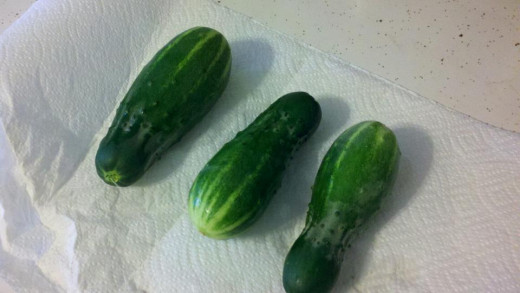
Rate this recipe!
A Brief History of the Pickle
Pickling goes back over 4000 years as a means of food preservation, especially during long journeys. The cucumber pickle was first introduced in India, where many varieties of cucumber still exist. Not just a means of preservation, many people then and now make pickles because of the desirable flavor that is produced by pickling cucumbers and a variety of other vegetables.
Pickling vs. Brining: What's the Difference?
Both are methods of food preservation and produce similar flavors. The main difference is pickling typically uses both salt and vinegar. In brining, the mixture is mainly just salt and water.
Another difference is that often times in brining, you are also fermenting the vegetables, which create beneficial microbes (probiotics) and vitamins.
My preferred method is pickling, but try both techniques for yourself to see which one you enjoy better.
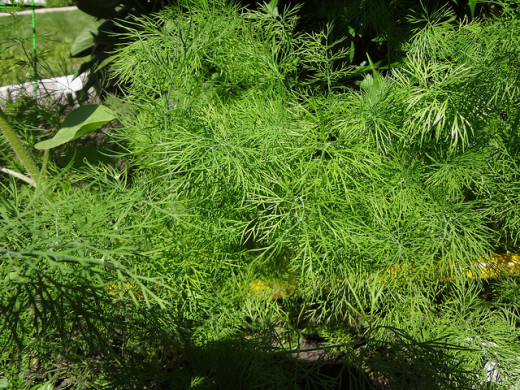
For This Recipe You Will Need:
- Cucumbers-sliced as thin as you would like them to be
- Garlic Cloves-peeled and smashed to let the flavors out
- Dill seed-fresh or dried, whichever you have on hand
- Dill leaves-fresh or dried, whichever you have on hand
- White or Apple Cider Vinegar
- Pickling Salt or Kosher Salt
- Water
- Black Peppercorns
- Hot Pepper Flakes or fresh hot peppers from the garden (optional if you want it spicy)
Interesting Fact about Dill
Dill is one of the only herbs that tastes exactly the same both fresh and dried. It doesn't lose it's potency when dried.
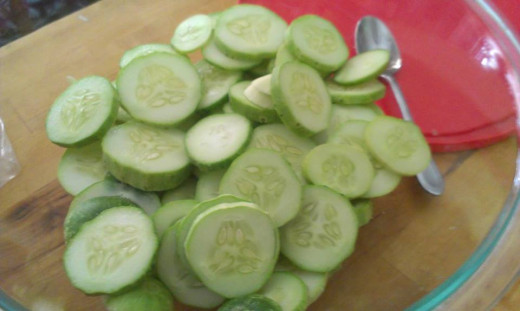
Ingredients
- 3 to 4 large Cucumbers, Sliced into rounds
- 2 Cups Water
- 2 Cups Vinegar
- 1/2 Cup Salt
- 6 Cloves Garlic, Peeled and smashed
- 1/4 Cup Dill Leaves, Chopped
- 3 teaspoons Dill Seed
- 2 teaspoons Black Peppercorns, Whole
Instructions
- Combine water, vinegar, salt, garlic and herbs in a saucepan.
- Slice cucumbers into rounds and place into a bowl (preferably glass) with a lid.
- Bring pickling mixture to a boil and then take off the heat.
- Pour pickling mixture over cucumbers. Cover the bowl with the lid and let sit out on the counter until cool.
- When cool, transfer pickles, including the brine into mason jars.
- Store in the refrigerator.
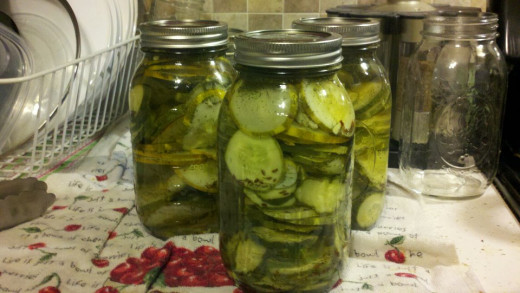
Other Flavors You Can Experiment With
Aside from the most common form of pickles (the dill pickle) you can experiment with other herbs and spices like different types of hot peppers, assorted flavors of Basil (Lemon Basil, Cinnamon Basil, Licorice Basil etc), and using sugar to make sweet pickles.
Creating Vegetable Salads in Mason Jars
You can gather virtually anything from your garden, add a brine, pickle or vinaigrette, store in mason jars and bring to a family picnic. Mason jars are the perfect on-the-go vessel and you can prepare these in advance and store in the refrigerator until you are ready to use.
Here are a few great ideas:
- Combine cucumbers, tomatoes, oregano, dill, crumbled feta cheese and sweet onions with vinegar and olive oil for a Greek- inspired salad.
- Combine tomatoes, fresh basil, mozzarella cheese cubes, olive oil and balsamic vinegar for an Italian-inspired salad.
- Combine fresh okra, sliced, with cider vinegar, sesame oil and curry powder for an Indian-inspired salad.
Nutritional Information
| Nutrition Facts | |
|---|---|
| Serving size: 65g | |
| Calories | 8 |
| Calories from Fat | 0 |
| % Daily Value * | |
| Fat 0 g | |
| Saturated fat 0 g | |
| Unsaturated fat 0 g | |
| Carbohydrates 2 g | 1% |
| Sugar 0 g | |
| Fiber 1 g | 4% |
| Protein 0 g | |
| Cholesterol 0 mg | |
| Sodium 560 mg | 23% |
| * The Percent Daily Values are based on a 2,000 calorie diet, so your values may change depending on your calorie needs. The values here may not be 100% accurate because the recipes have not been professionally evaluated nor have they been evaluated by the U.S. FDA. | |
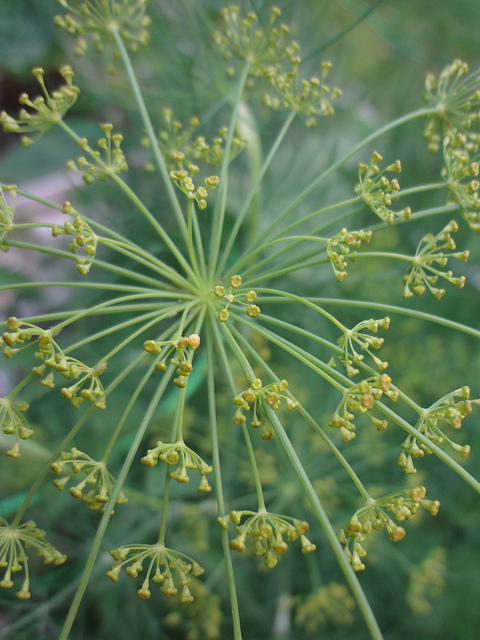
Quick Pickles
How likely are you to use this recipe for quick pickles
© 2014 Lisa Roppolo








